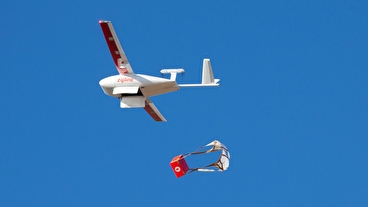
Advanced Air Mobility
Driving the Industry Forward with an Emphasis on Social and Environmental Benefits


Susan Shaheen, Transportation Sustainability Research Center (TSRC), UC Berkeley Institute of Transportation Studies (ITS) and Department of Civil and Environmental Engineering
Areas of Expertise: Energy, Civil Infrastructure and Climate, & Transportation Engineering
Adam Cohen, TSRC, UC Berkeley ITS
Aviation is undergoing rapid change around the world. A variety of technological advancements and industry investments in electrification, alternative fuels, automation, vertical take-off and landing (VTOL) aircraft, uncrewed aircraft systems (UAS), and air traffic management are enabling innovations in aircraft designs, services, and business models. In recent years, on-demand aviation services similar to transportation network companies such as Uber and Lyft have entered the marketplace. For example, BLADE—which employs third-party operators who own, manage, and maintain their aircraft—provides helicopter services booked through a smartphone app.

Commonly referred to as advanced air mobility or AAM, this broad concept focuses on emerging markets and use cases for aviation in urban, suburban, and rural communities. AAM includes local use cases of about a 50-mile radius for rural or urban areas as well as intraregional use cases of up to a few hundred miles within or between urban and rural areas. AAM is used for passenger mobility, goods delivery, and emergency services, among other operations. As this sector expands, private, public, and academic partners must work together to ensure AAM successfully addresses critical use cases and that its benefits are spread equitably across geographies and populations.
Challenges to growing, adopting, and mainstreaming AAM as an emerging concept include:
- Safety and the regulatory environment
- Air traffic management
- Community engagement and acceptance
- Social equity
- Weather
- Environmental impacts
- Infrastructure
- Security
Community acceptance and social equity represent two of the greatest challenges. At present, on-demand aviation services have typically averaged $149 to $300 per seat (although some are considerably more expensive). Today, these price points serve higher-income and business travelers. Yet a number of market studies estimate that electrification and autonomy have the potential to reduce the cost of AAM services. Safety and regulatory parameters are also a major challenge. Civil aviation authorities will need to develop and evolve standards for manufacturing, operating, and maintaining AAM vehicles. A new slew of certifications for procedures, crews and operators, and the management of AAM facilities will also be needed, which falls under the jurisdiction of the Federal Aviation Administration (FAA).
| Issue | Description | Examples |
|---|---|---|
| Safety and the regulatory environment | Regulatory challenges and concerns about the safety of AAM users, other airspace users, and bystanders (i.e., people on the ground beneath a flight path) |
- Flights outside approved airspace - Critical system failure (e.g., degraded or loss of command and control, GPS, engine failure) - Cybersecurity risks |
| Air traffic management | Safe management of airspace at relatively low altitudes and in dense, urban environments |
- AAM operation in controlled and uncontrolled airspace and alongside both experienced and less experienced airspace users (e.g., commercial pilots and recreational drone pilots, respectively) |
| Community acceptance | Negative community perceptions associated with safety, environmental, community, and equity impacts that pose potential challenges to adoption and mainstreaming |
- Noise and visual pollution - Environmental impacts (e.g., land use and air quality impacts of vertiport locations) - Privacy concerns |
| Social equity | Ensuring meaningful involvement in the AAM decision-making process, protecting the public from unintended consequences/adverse impacts, and safeguarding broad public benefits of AAM services and use cases |
- Affordability - Accessibility for people with disabilities - Employment in AAM-related jobs |
| Weather | Safety-critical risks and operational challenges presented by varying weather conditions |
- Low visibility - Icing (snow or ice that accumulates on flight surfaces) - Wind shear (a rapid change in wind speed and/or direction) - Thunderstorms |
| Environmental impacts | A variety of environmental impacts such as noise, visual pollution, and induced demand (increased demand due to aviation operations and service changes) |
- Induced demand from more AAM flights - Shifting some surface congestion to AAM, which could lead to visual pollution, noise, and other adverse impacts |
| Infrastructure | Building a network of take-off and landing facilities, maintenance facilities, and energy infrastructure to support charging and/or refueling |
- Vertiports - Maintenance facilities - Electric VTOL (eVTOL) charging - Hydrogen fueling |
| Security | Ensuring the personal, personnel, physical and cybersecurity of AAM necessary for maintaining safety and community support |
- Hijacking - Unruly behavior or violence against passengers |
Prioritizing humanitarian, aeromedical, and emergency response use cases to demonstrate the broad societal benefits of AAM could help build public support for these emerging technologies. Both in developed and developing countries, a number of service providers are employing drones to deliver critical medical supplies, protective equipment, prescriptions, and COVID test supplies. Some early demonstrations have used drone delivery for medical use cases in Rwanda and Ghana since 2016 and 2019, respectively. Both drones and VTOLs have the potential to expand aeromedical transport and access to medical care for patients in remote areas where the road infrastructure does not support quick health care delivery.
In addition to humanitarian use cases, AAM could potentially provide new jobs both directly and indirectly in operations, engineering, aircraft design, business operation, safety, travel services, and hospitality. AAM presents an opportunity for industry and academia to support reskilling and upskilling for a highly trained aviation workforce. Reskilling involves training professionals for a different job, and upskilling is training professionals in additional skills to more effectively execute the same job. AAM will require both reskilling and upskilling to support new approaches and practices in air traffic management systems, energy infrastructure, and the design, manufacture, maintenance, and operations of electric, hydrogen, and highly automated aircraft. Additionally, synergies will likely occur between AAM and the growth of electric and automated vehicles—creating opportunities to build a skilled and flexible workforce that can capitalize on many emerging high-road job opportunities across the transportation sector.